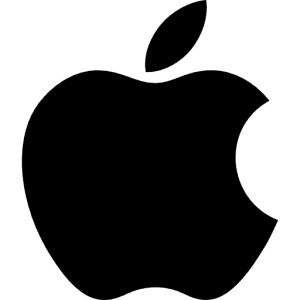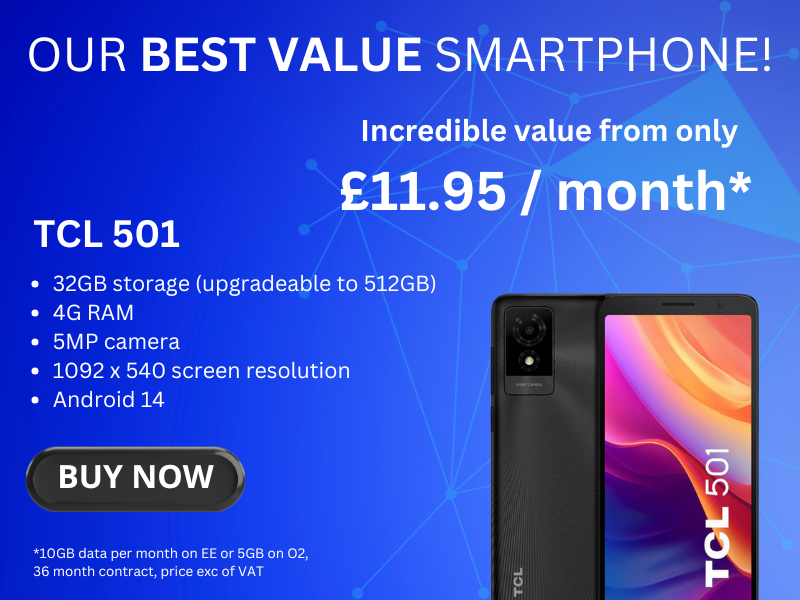Android phones for Business
Find your next Android business mobile contract in minutes with Simpatico.
Want something different? We offer a range of devices from various manufacturers, each offering unique features, design aesthetics, and target demographics. Leading the pack is Google’s Pixel series, renowned for its pure Android experience, timely software updates, and advanced camera capabilities driven by AI algorithms. At the other end of the spectrum, for sheer value for money nothing beats the low cost TCL range. TCL offer a range of smartphones and feature phones at prices which can’t be beaten.
Other notable players include Nokia and Motorola, known for delivering reliable mid-range devices with near-stock Android experiences. As the Android ecosystem continues to evolve, non-Samsung manufacturers contribute to its diversity by offering devices tailored to different preferences and price points, ensuring a vibrant and competitive market landscape.
Can’t find what you want? We can do bespoke prices for just about any make and model of phone – click here to contact us and tell us what you’re looking for!
How to order
Just choose your preferred handset, then your contract length, network and monthly data requirements. Then go through to checkout and add your details. No payment will be taken at this stage – we’ll send you a contract to e-sign and a consultant will contact you to arrange delivery. We’ll make the process as painless as possible to ensure you give us a 5-star review!
Please note that the prices quoted increase on the 1 April each year by £1.25 plus VAT.
Showing 13–13 of 13 resultsSorted by price: high to low
-
View Deals
TCL 4021
From £9.95 per month
Business Contracts
Filter by price
-
 Apple iPhones1212 products
Apple iPhones1212 products -
 Samsung phones2020 products
Samsung phones2020 products -
 Other Android phones1313 products
Other Android phones1313 products -
 Sim only44 products
Sim only44 products -
 Bestsellers55 products
Bestsellers55 products -
 Tablets & iPads66 products
Tablets & iPads66 products -
 VoIP11 product
VoIP11 product
Customer Reviews
Always happy to help and advice.
Just so easy to do business with!
Join Our Newsletter
We won’t bombard you with spam – just a monthly update with product reviews, useful advice and our latest special offers.
Android Phones For Business FAQs
Which brands are included in your Android collection?
Our collection features popular Android brands including Google Pixel, Oppo, Motorola, Nokia, and other manufacturers. We also offer a range of Samsung devices for business users in their own dedicated section of the store.
Is Android The Same On All Devices?
The Google Pixel offers a “pure” version of Android, as designed by Google. Customised versions of Android, like MIUI (Xiaomi), or ColorOS (Oppo) add additional features and visual modifications to the base Android experience.
How often do these phones receive software updates?
Update frequency varies by manufacturer:
- Google Pixel phones receive updates for 7 years after launch
- Most other manufacturers provide 2-3 years of major Android updates and 3-4 years of security patches
Do all these phones support 5G?
Most of our devices support 5G connectivity. However there may be some older, or entry-level devices which are not 5G compatible. Check the individual product specifications on each phone for more detailed information, including its connectivitiy.
Can I Transfer Data From My Old Device?
Yes, Android makes it very easy to transfer data onto a new device. Google has a build-in backup and restore feature, which should work well for most business users. Some manufacturers may also have their own transfer tools, and there are also third-party apps available on the Google Play Store that can help.
Which Android Phone Is Right For My Business?
The right phone will depend on how you intend to use it and your budget. We’d recommend looking at our round-up of the Best Business Mobiles which gives suggestions for all types of business users.




